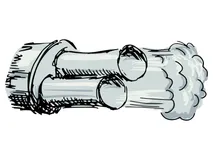Introduction:
When it comes to investing in stocks and shares, one important factor to consider is the tax implications of any returns you earn. The concept of dividend allowance plays a crucial role in determining the tax you owe on your dividend income. Understanding how dividend allowance works and how to optimize it can help you maximize your investment returns. In this article, we will delve into the intricacies of dividend allowance and provide valuable insights to help you make informed investment decisions.
What is Dividend Allowance?
Dividend allowance refers to the amount of dividend income you can receive each tax year without paying any tax on it. Introduced in April 2016 in the United Kingdom, dividend allowance aimed to simplify the tax system and encourage investment. It replaced the previous system of tax credits on dividends. Currently, the dividend allowance stands at £2,000 per tax year.
The Benefits of Dividend Allowance
Embracing dividend allowance offers several advantages to investors. Let’s explore some of the key benefits:
Tax Efficiency:
The primary benefit of dividend allowance is its tax efficiency. By allowing individuals to receive up to £2,000 in dividend income tax-free, it helps investors retain a larger portion of their returns, enabling faster growth of their investment portfolios.
Flexibility:
Dividend allowance provides investors with the flexibility to allocate their investment income in a manner that minimizes their tax liability. By optimizing dividend distributions across various investments, individuals can make the most of their allowance and reduce their overall tax burden.
Encouraging Investment:
Dividend allowance encourages individuals to invest in dividend-paying stocks and shares, fostering economic growth and incentivizing entrepreneurship. The tax-free allowance motivates investors to seek out opportunities that generate regular dividend income.
Maximizing Your Dividend Allowance
To make the most of the dividend allowance, consider implementing the following strategies:
Diversify Your Portfolio
Spreading your investments across various dividend-paying assets can help you optimize your dividend allowance. By investing in a diversified portfolio of stocks and shares, you can potentially maximize your tax-free dividend income while mitigating risk.
Utilize Tax-Free Accounts
Take advantage of tax-efficient investment accounts such as Individual Savings Accounts (ISAs) or Self-Invested Personal Pensions (SIPPs). By utilizing these accounts, you can generate tax-free dividends on your investments, effectively utilizing your dividend allowance while enjoying additional tax benefits.
Consider Timing
Be mindful of the timing of your dividend distributions. If you have control over the timing, strategically plan to receive dividends in different tax years to make the most of your dividend allowance in each year.
Frequently Asked Questions (FAQs) about dividend allowance.
Can the dividend allowance be carried forward to the next tax year?
No, the dividend allowance cannot be carried forward. It resets at the beginning of each tax year, and any unused portion does not roll over.
Does dividend allowance apply to all types of dividends?
Yes, the dividend allowance applies to all dividends received from UK companies and certain foreign dividends. However, dividend income from investments held in ISAs or SIPPs is already tax-free.
Conclusion:
Understanding the concept of dividend allowance is crucial for investors aiming to optimize their returns. By utilizing the tax-efficient strategies outlined in this article and staying informed about the latest tax regulations, you can make the most of your dividend allowance. Remember, seeking professional financial advice is always recommended to tailor these strategies to your individual circumstances. With a solid grasp of dividend allowance, you can pave the way for increased investment returns and long-term financial success.







